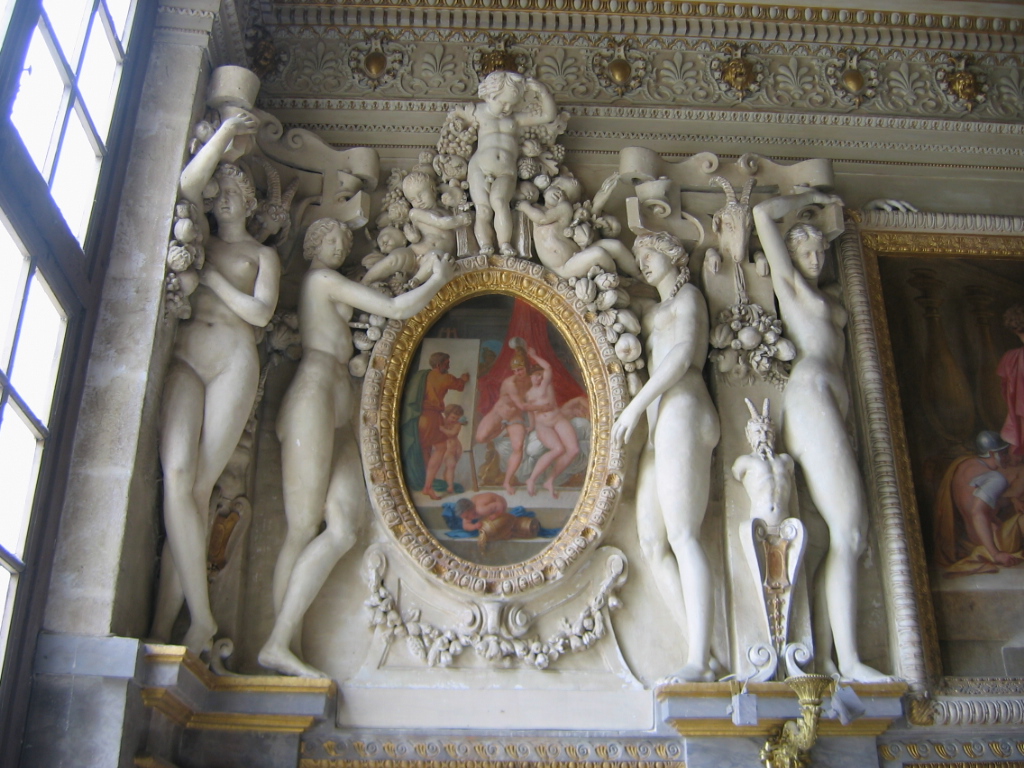
Plaster
Plaster is a building material used for the protective or decorative coating of walls and ceilings and for moulding and casting decorative elements.[1] In English, "plaster" usually means a material used for the interiors of buildings, while "render" commonly refers to external applications.[2] The term stucco refers to plasterwork that is worked in some way to produce relief decoration, rather than flat surfaces.
This article is about the type of building material and "Plaster of Paris". For other uses, see Plaster (disambiguation).
The most common types of plaster mainly contain either gypsum, lime, or cement,[3] but all work in a similar way. The plaster is manufactured as a dry powder and is mixed with water to form a stiff but workable paste immediately before it is applied to the surface. The reaction with water liberates heat through crystallization and the hydrated plaster then hardens.
Plaster can be relatively easily worked with metal tools and sandpaper and can be moulded, either on site or in advance, and worked pieces can be put in place with adhesive. Plaster is suitable for finishing rather than load-bearing, and when thickly applied for decoration may require a hidden supporting framework.
Forms of plaster have several other uses. In medicine, plaster orthopedic casts are still often used for supporting set broken bones. In dentistry, plaster is used to make dental models by pouring the material into dental impressions. Various types of models and moulds are made with plaster. In art, lime plaster is the traditional matrix for fresco painting; the pigments are applied to a thin wet top layer of plaster and fuse with it so that the painting is actually in coloured plaster. In the ancient world, as well as the sort of ornamental designs in plaster relief that are still used, plaster was also widely used to create large figurative reliefs for walls, though few of these have survived.
Safety issues[edit]
The chemical reaction that occurs when plaster is mixed with water is exothermic. When plaster sets, it can reach temperatures of more than 60 °C (140 °F) and, in large volumes, can burn the skin. In January 2007, a secondary school student in Lincolnshire, England sustained third-degree burns after encasing her hands in a bucket of plaster as part of a school art project.[25]
Plaster that contain powdered silica or asbestos present health hazards if inhaled repeatedly. Asbestos is a known irritant when inhaled and can cause cancer, especially in people who smoke,[26][27] and inhalation can also cause asbestosis. Inhaled silica can cause silicosis and (in very rare cases) can encourage the development of cancer.[28] Persons working regularly with plaster containing these additives should take precautions to avoid inhaling powdered plaster, cured or uncured. (Note that asbestos is rarely used in modern plaster formulations because of its carcinogenic[29] effects.)
People can be exposed to plaster of Paris in the workplace by breathing it in, swallowing it, skin contact, and eye contact. The Occupational Safety and Health Administration (OSHA) has set the legal limit (permissible exposure limit) for plaster of Paris exposure in the workplace as 15 mg/m3 total exposure and 5 mg/m3 respiratory exposure over an 8-hour workday. The National Institute for Occupational Safety and Health (NIOSH) has set a Recommended exposure limit (REL) of 10 mg/m3 total exposure and 5 mg/m3 respiratory exposure over an 8-hour workday.[30]


